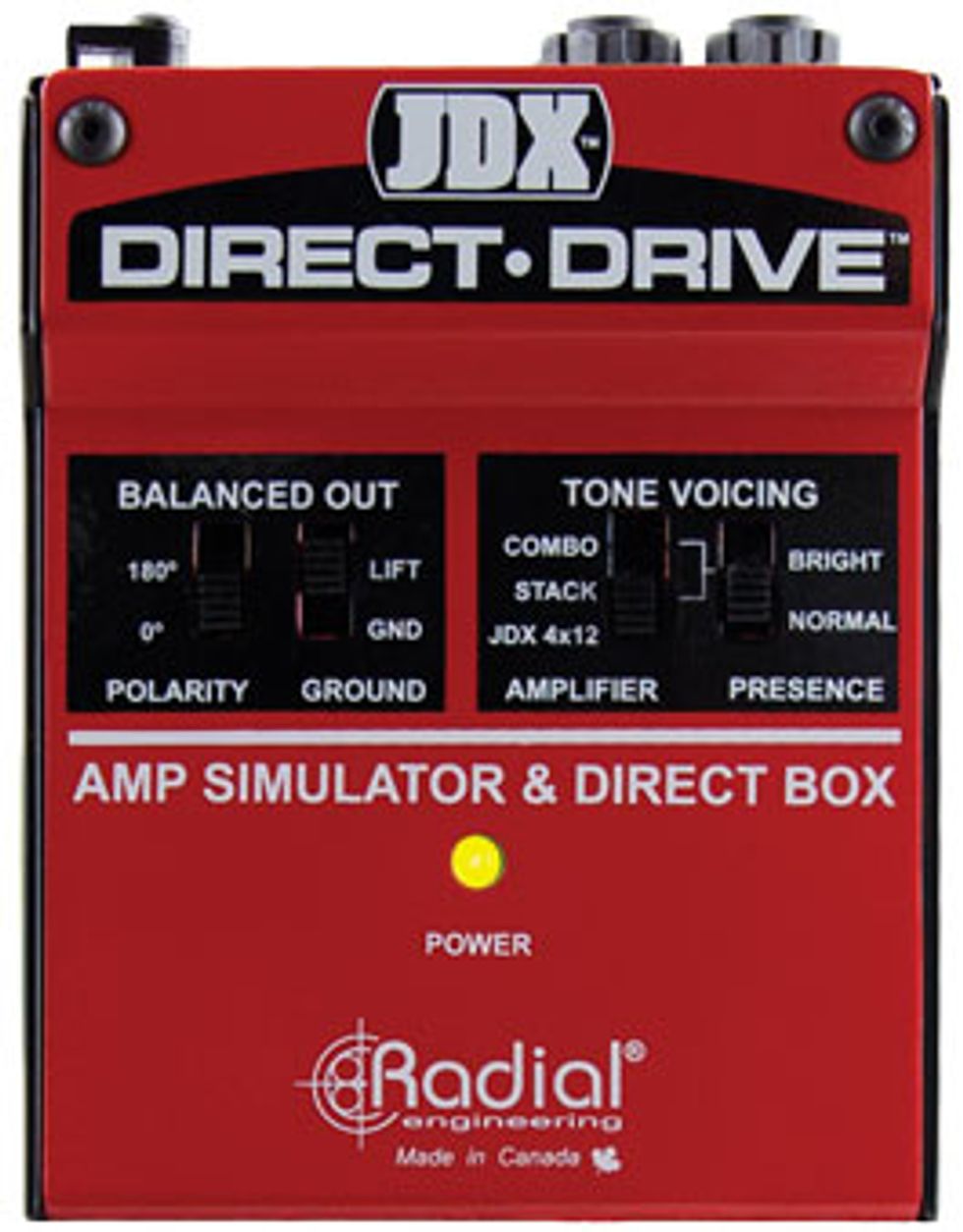
We all love the warm sound of a burning tube feeding a broken-in speaker, but let’s be honest: They aren’t the most dependable creations. The Radial JDX Direct Drive aims to serve several purposes. It’s a highly rugged DI for recording and a worthy replacement when you don't want to haul your Twin up two flights of stairs or a backup for when those tubes hit the skids in the middle of your gig. Generally speaking, you connect your pedalboard into the Direct Drive and then can either feed a PA or recording interface. You can also add a stage amp into the mix, if you wish.
There are five different settings (three amp choices with bright and normal modes for the stack and 4x12 modes) available via two switches on the top of the intensely rugged chassis. Usually the real test for DI tones is a clean signal, so I dialed up a hint of compression and used the combo setting. The clean tones lacked a bit of character through the PA, but the compressor or even a good boost pedal would easily fill in the gaps.
When I added some overdrive and a Les Paul the results were more convincing—especially in the stack setting. Lows and mids made themselves known without being too muddy. If your pickups are a bit on the darker side, however, the bright switch will help you considerably. Radial is known for making heavy-duty boxes that tend to simply make your life easier. The Direct Drive is a worthy heir to that tradition.
Test gear: Fender Telecaster, Gibson Les Paul, Visual Sound Route 66, Focusrite Scarlet 2i2, Apple GarageBand.
Ratings
Pros:
Solid construction. Dead simple to use. Plenty of I/O options.
Cons:
No EQ controls. Rather weak with cleaner tones.
Street:
$199
Radial JDX Direct Drive
radialeng.com







![Rig Rundown: Russian Circles’ Mike Sullivan [2025]](https://www.premierguitar.com/media-library/youtube.jpg?id=62303631&width=1245&height=700&quality=70&coordinates=0%2C0%2C0%2C0)

















